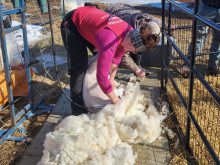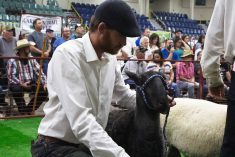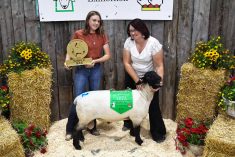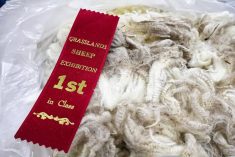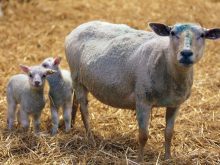Organizers scrambled to find room for 160 sheep and lambs from 32 producers for the Grasslands Sheep Exhibition
HUMBOLDT, Sask. — Sheep numbers at the 2023 Grasslands Sheep Exhibition in Humboldt, Sask., were up 50 percent over last year’s show, which organizers said is an indication of industry growth.
Sheep producers from across the Prairies participated in the July 21-23 exhibition.
Organized by the Saskatchewan Sheep Breeders Association and the Saskatchewan Sheep Development Board, the show includes all aspects of the industry, from show and sale to stock dog demonstrations, shearing competition, fibre displays and a trade show.
Chad Haaland, director of the association, said organizers scrambled to find room for around 160 head of sheep and lambs from 32 producers for this year’s event. Five breeds were on display.
Read Also

House ag committee to undertake several studies
The House of Commons standing agriculture committee has set its agenda for the coming months. Members began the fall sitting with a two-hour update on international trade
“The depth and the quality of the purebred industry here, which will essentially expand the markets and quality of lamb offered in the commercial industry, it’ll do nothing but good for them,” Haaland said of participating breeders.
With the bang of the final gavel, 152 animals brought $107,110 in sales for sheep breeders, with an average price of $704.67 per animal.
Haaland said these prices would be impressive if they were solely a commercial sale. However, considering that the majority of sales were purebred animals and imported genetics, which usually come at a premium, these final sales totals are not a clear indication of the market as a whole.
“This was a presentation of the best of what the group of breeders presenting at the show and sale had to offer,” he said in an email following the show.
Breeders are sharing good genetics, said Gordon Schroeder, executive director of the development board. Quality is a sign the industry is producing better animals from one year to another, and although the market is typically sluggish during summer, there is optimism, he added.
“We’re anticipating a growth involved again for markets and we’re hoping the economy will change a little bit so the demand will be up a little bit more as well.”
Urban markets for sheep and lamb are stabilizing and there is room for growth, said Haaland. On the flip side, anyone looking to get into agriculture has an easier time with sheep.
“They’re looking at something that’s safe for handling with their wife and their kids, or they just don’t want the stress of large animals. They’re not set up for a big amount of animals so it is still possible for people that are in the small industry to expand into and get into agriculture.”
The future of the industry was evident in the Junior Sheep Show on July 23, which set a record for the number of kids showing, said Schroeder.
At the trade show, booths had products and information involving flock management, fencing, handling systems and stock dogs.
Lonnie Penner and Kevin Donald and their dogs were on the ball diamonds next to the arena. Visitors saw a demonstration of how the dogs work to move sheep on the farm and how Donald and Penner direct the dogs with verbal commands.
Donald said many people asked him for advice on how to bring stock dogs into a livestock operation. His advice is to start with a dog that’s already had some training.
“I know everyone likes to have a pup but it does make your life a lot easier if you can get one from someone that’s already started (working).”





